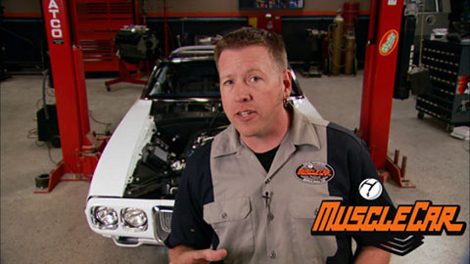MuscleCar Builds
Want more content like this?
Join the PowerNation Email NewsletterParts Used In This Episode
Dupli-Color
Dupli-Color Professional Weld-Through/Cold Galvanized Primer provides maximum corrosion resistance with a durable zinc-rich coating that can be applied directly to dry metal or galvanized surfaces.
Ballistic Fabrication
Weld in Inner Diameter Tube Clamps. CNC turned and CNC milled for a precise fit. Ideal for roll cages, engine bridges and other tube sections that need to be removed.
Dave's Driveshaft Shop
custom lengthening of driveshaft
Matco Tools
Deep hook attachment,Plugweld pliers,Spot weld drill kit
O'Reilly Auto Parts
Flexplate Bolts
O'Reilly Auto Parts
Transmission Mount
O'Reilly Auto Parts
40 AMP AGU Fuses
O'Reilly Auto Parts
Windshield Urethane
O'Reilly Auto Parts
1/2" Wheel Nuts (4)
O'Reilly Auto Parts
Shifter Linkage Bushings
O'Reilly Auto Parts
Miscellaneous
O'Reilly Auto Parts
Stock Torque Convertor
O'Reilly Auto Parts
TURBO 400 B.O.P., flexplate, shifter, cooler, convertor, extra cooler line, pair of fittings 1/4" NPT to 5/16" barb, dipstick
O'Reilly Auto Parts
case of transmission fluid
O'Reilly Auto Parts
41T Driven Gear, Retainer, Sleeve, Seal
Tube Shark
SharkPool Combines TubeShark о Bender & Notcher on Sturdy Rolling Bench.
YearOne
Electric-Life front power window kit for 1968-1969 Camaro/Firebird coupe and convertible models with manual window crank mechanisms. Electric-Life rear quarter power window kit for 1967-1969 Camaro/Firebrid coupe and convertible models with manual window crank mechanisms. Reproduction 1-button power window switch features high-quality chrome plating with the correct rounded corners. Reproduction 4-button switch is the "round corner" switch and includes the bezel. LH power window harness.

























